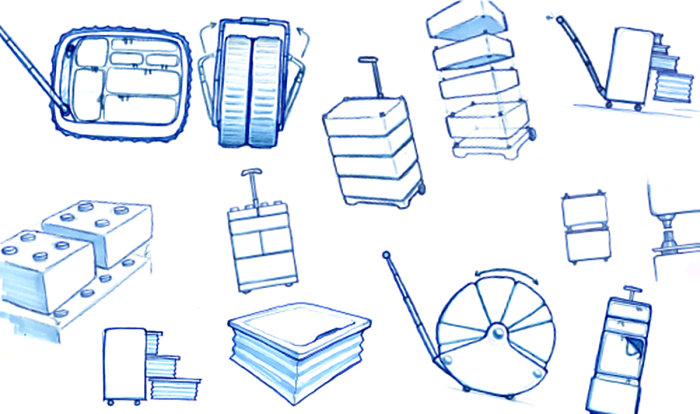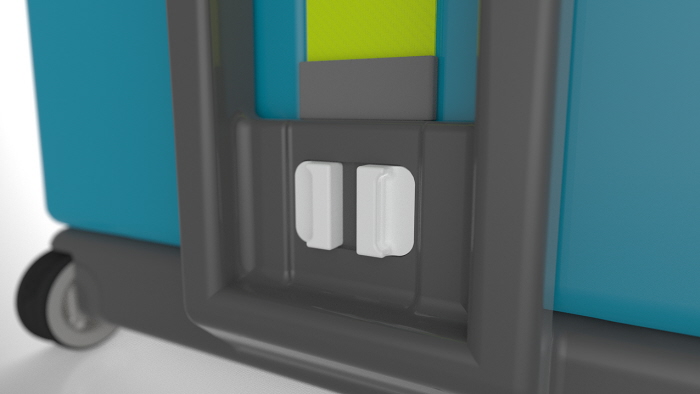

PRELIMINARY RESEARCH:
With the goal of identifying challenges and opportunities associated with travelling with personal belongings, I took a trip, and documented it as I went. I started with the packing process, and observed people at the airport, through to the arrival to my destination. As a class we compiled our key insights and by synthesizing our research, we were able to achieve a better understanding of what we found. Our collective insights were sorted into six groups.

SECONDARY RESEARCH:
I chose to pursue solutions utilizing bag function because I saw many problems with the actual ability of bags to accommodate travelers needs. I conducted secondary research looking into existing luggage products. I also sent out a questionnaire to get more insights into the packing process specifically. When many responded with various difficulties with lack of compartments I chose to focus on making packing and unpacking easier. My problem statement became “to develop a storage solution that helps a traveler transport the things they bring with them specifically addressing difficulties with packing efficiency and accessing ones belongings.”

CONCEPTUALIZATION:
To help myself understand the problem as well as to clearly illustrate it, I created a storyboard. We were encouraged to explore different mediums and to do something non-typical and creative. I created a short and lighthearted stop motion animation. In it I established my user profile and showed a common problem with single compartment bag designs.

IDEATION:
With my problem clearly defined, I began brainstorming concepts. I mainly explored compartmentalization and modularity. I looked for inspiration in nature and in everyday items. I settled in on a stacking layers idea and explored different forms, mechanisms, and styles, eventually finalizing a Lego-like hardshell concept.


FINAL CONCEPT:
The final concept is a hard shell modular suitcase. Three different layer sizes allow storage of most any item, while facilitating organization. The arrangement in the rendering is for a family of three, parents in the bottom two, and the child in the third. The top split layer could hold smaller items, like toiletries or electronics or become carry-on luggage.
Dividus is an ever adaptable bag which, depending on the trip, and the user, can transport any traveler’s belongings.

Each layer locks into the layer below it, keeping the stack in alignment.

The security band retracts out of the base, travels over the compartments, and latches, holding the layers solid. The combination of the interlocking modules and the security band keep the compartments safe from shifting during travel.

Typical Process:
The family packs their respective layers.
All the units are brought together and secured.
At the airport, the two carry-ons are separated, and the bag is checked.
At the destination airport, the modules are reassembled.
Travel to the hotel with the bag as one unit.
At the hotel, all modules are separated and used by each family member separately.
gLike